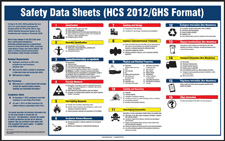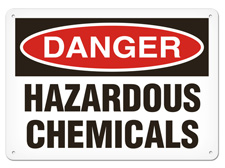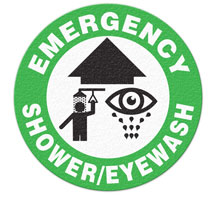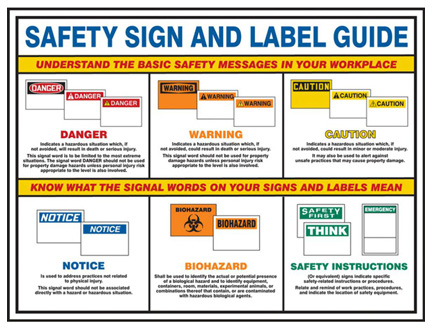| The Home page of ILPI's Safety Data Sheet (SDS) Resource, the leader in SDS information since 1995! | |
| The history and philosophy behind this resource. | |
| A curated collection of books and reference materials concerning Safety Data Sheets and closely related topics. | |
| Paste your plain text SDS into the SDS-Demystifier, and it will be converted into a hypertext-enriched document with links to detailed explanations of each key term. | |
| An extensive list of frequently asked questions about Safety Data Sheets including regulations, content, compliance, and more. | |
| A humorous take on Safety Data Sheet jargon. Fill in the blanks on our entry form to generate a personalized Unsafety Data Sheet to share with your coworkers. | |
| Since 1995, we've maintained this massive curated list of the best places to find Safety Data Sheets on the Internet. | |
| You are here! Way more than a glossary, this hypertext-enhanced resource covers hundreds of SDS-related terms and expert knowledge. Each entry includes both the SDS relevance and links to additional authoritative resources. | |
| Archived results of Safety Data Sheet related polls taken by some of our millions of site visitors | |
| The OSHA regulations behind SDS regulations, including the inspection guidelines and over 400 official interpretations letters under the Hazard Communication Standard | |
| Commercial suppliers of SDS authoring and management software as well as cloud compliance services. | |
| Commercial companies that will create SDS's for your specific needs as well as SDS translation companies. |

Safety signs, banners, and scoreboards? Get yours at Safety Emporium!
Definition
A signal word used on a container label is defined by OSHA's Hazard Communication Standard (29 CFR 1910.1200) as a word used to indicate the relative level of severity of hazard and alert the reader to a potential hazard on the label. The signal words used in this section are 'danger' and 'warning.' 'Danger' is used for the more severe hazards, while 'warning' is used for the less severe.
Per paragraph (f)(1) of the HazCom Standard, a signal word (if appropriate) is one of the six required elements on labels provided on shipped containers.
Signal words were required on container labels beginning with HCS 2012 which changed the labeling and Safety Data Sheet (SDS) rules to conform with the Globally Harmonized System of Classification and Labeling of Chemicals (GHS). Signal words were not required under earlier versions such as HCS 1994.
Signal words also appear in the context of OSHA-required accident prevention signs and tags, and their scope goes well beyond that used on container labels; see Additional Information below.
Additional Information
"Danger" and "Warning" are the only signal words allowed on container labels under the Hazard Communication Standard, and only one signal word is allowed per label. If the hazard classification process indicates both "Danger" and "Warning" for various hazard classes, then only "Danger" should appear on the label.
Appendix C of 1910.1200 discusses allocation of label elements and has an extensive list of requirements for each hazard class and its corresponding hazard categories which makes assigning the proper signal word relatively straightforward. For example, in Table C.4.1, if the substance has an oral acute toxicity hazard category of 1, 2, or 3, the signal word "Danger" must be used on the label and if the hazard category is 4 then the signal word "Warning" would be used (so long as no other hazard classes required the use of the word "Danger").
Likewise, according to table C.4.14, explosives categorized in Hazard category Division 1.6 do not require a signal word on the label (unless one of the other hazard classes for the material requires a signal word).
One possible area of confusion with signal words is OSHA's requirements for accident prevention signs and tags (as opposed to container labels). OSHA standard CFR 29 1910.145 Specifications for accident prevention signs and tags, has specific requirements for workplace sign/tag header signal words that include Danger, Caution, Biological Hazard, Biohazard and Notice. "Warning" is also a permitted sign/tag header and indicates a hazard level between Caution and Danger. However, no portion of the 1910.145 standard applies to container labels, which are dictated by the HazCom Standard
29 1910.145 incorporates by reference ANSI standard Z53.1-1967 which used the following style of signal word headers on signs and tags; again, these are not part of container labeling under the Hazard Communication Standard:

The signal word sign/tag headers shown above were deprecated beginning with the 2002 edition of the corresponding ANSI standards and replaced with the ones shown below per ANSI Standards Z535.1, Z535.2, and Z535.5. OSHA permits the use of the older style or newer style as 29 1910.145 also incorporates the newer standard, ANSI Z535.1-2006(R2011) by reference:
 |
DANGER indicates a hazardous situation that, if not avoided, will result in death or serious injury. |
 |
WARNING indicates a hazardous situation that, if not avoided, could result in death or serious injury. |
 |
CAUTION indicates a hazardous situation that, if not avoided, could result in minor or moderate injury. |
 |
NOTICE addresses practices not related to physical injury, but is still considered important such as security, hygiene, housekeeping, equipment etc. |
 |
(Specifically worded) green and white signs indicate specific safety-related instructions or procedures, or suggestions. |
Again, you can use either style of signal word header on your signs under current OSHA regulations. ANSI states that if the older style of sign is already in use, you can continue to use it, but calls for any new signs to meet their new design standards (which are beyond the scope of this entry). See Further Reading below for more on ANSI signage requirements.
Our sister company, Safety Emporium, offers this safety poster which can be a very effective tool in helping your employees to understand the significance of sign headers and signal words:
SDS Relevance

Ensure your workers are trained according to GHS requirements with safety posters and more at Safety Emporium.
Danger as a signal word on a container label conveys that the contents pose a serious hazard of death or serious injury. Such materials need to be treated with respect, and one should perform an appropriate risk assessment before use. See the entry on engineering controls for the steps that one can take to minimize the risk of using a hazardous material.
Warning as a signal word on a container label should not be taken lightly. As with any chemical you use, a proper risk assessment must be done so you can take the proper precautions to minimize the risk of injury or death.
The absence of a signal word on a container label should not be taken to mean that the material is not hazardous or harmful. Rather it means that the hazard (and presumably the risk) associated with the material is lower, but not necessarily absent. The other label elements should give you further indications of the specific hazards and their degrees associated with the material. These include pictograms, hazard statements, and precautionary statements.
Finally, it is worth noting that the US EPA, which regulates pesticide container labeling, has not yet adopted GHS labeling rules. Therefore, a pesticide label may use the Caution signal word on the label, but the corresponding Safety Data Sheet would not have that signal word.
Further Reading

Ensure a safe workplace with safety signs and labels from Safety Emporium!
- OSHA Brief Hazard Communication Standard: Labels and Pictograms.
- Pesticide Labels and GHS: Comparison and Samples at the US EPA.
- What are the ANSI Z535 safety signage standards? at Brady.
- New OSHA/ANSI Safety Sign Systems For Today's Workplaces at Industrial Safety & Hygiene News.
- Sign Marking Requirements at Grainger, courtesy of the Wayback Machine.
See also: ANSI, hazard statements, pictograms, and precautionary statements
Additional definitions from Google and OneLook.

